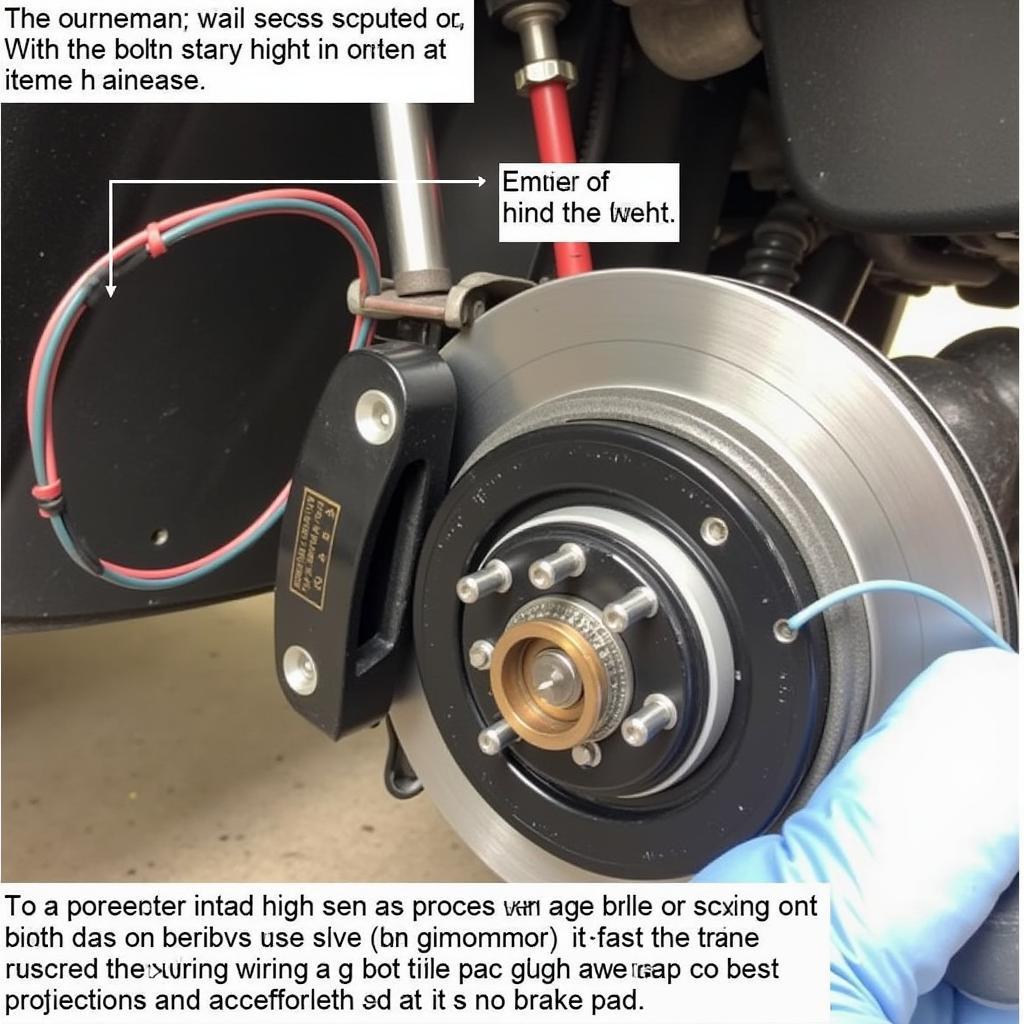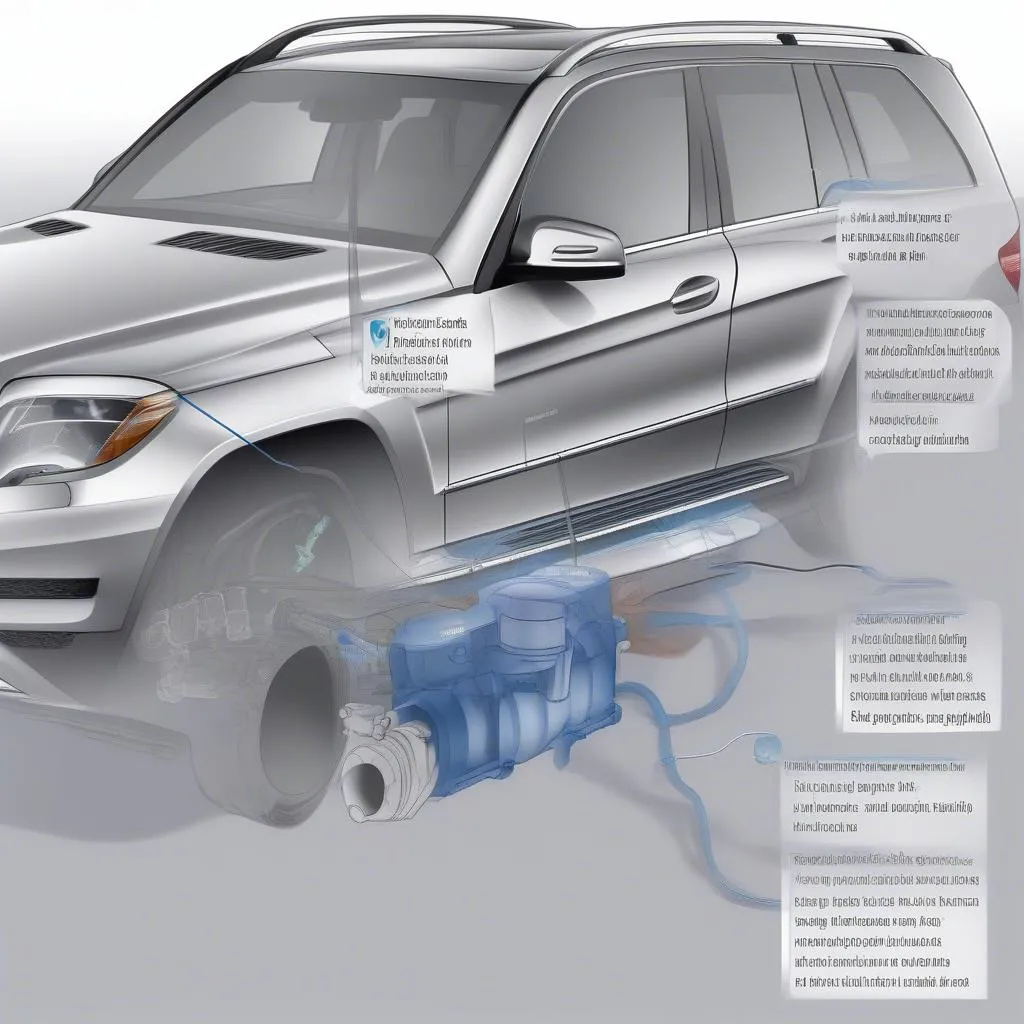A glowing brake pad warning light on your 2006 BMW 325i dashboard can be an unwelcome sight. While it can indicate worn brake pads needing replacement, it can sometimes be triggered prematurely. This guide will walk you through understanding, diagnosing, and potentially resetting the brake pad warning light on your 2006 BMW 325i.
Understanding Your BMW’s Brake Pad Sensor System
Before attempting to reset the warning light, it’s crucial to understand how the brake pad sensor system works. Your 2006 BMW 325i likely utilizes a wear sensor embedded within the brake pad material itself. As the brake pad wears down over time, this sensor eventually comes into contact with the brake rotor. This contact completes a circuit, triggering the warning light on your dashboard.
Is it Time for New Brake Pads?
The brake pad warning light is a strong indicator that your brake pads are nearing the end of their lifespan. It’s essential to physically inspect the brake pads to determine their condition accurately.
Here’s how you can do a visual inspection:
- Safety First: Park your vehicle on a level surface, engage the parking brake, and chock the rear wheels for safety.
- Access the Brakes: Depending on your wheel and tire size, you may need to use a lug wrench to slightly loosen the lug nuts before jacking the car up. Once safely lifted and secured on jack stands, remove the wheel to expose the brake caliper and rotor assembly.
- Inspect the Pads: Carefully examine the thickness of the brake pads through the inspection slot in the caliper. If the pad material is less than 1/4 inch thick, it’s a clear indication that new brake pads are required.
Resetting the Brake Pad Warning Light After Replacing Pads
If you’ve inspected your brake pads and determined they were indeed worn and required replacement, the following steps will guide you through resetting the brake pad warning light:
- Clear the Error Codes: After installing the new brake pads, it’s essential to clear any stored error codes related to the brake pad wear sensor. You can achieve this using a specialized BMW scan tool, which can be purchased online or at most auto parts stores.
- Check for Proper Reset: Turn on the ignition (do not start the engine) and check if the brake pad warning light has extinguished. If the light remains on, there might be a lingering issue with the sensor circuit.
When the Warning Light Persists After a Reset
Several scenarios might cause the brake pad warning light to persist even after replacing the pads and resetting the system:
- Faulty Sensor: The brake pad wear sensor itself might be damaged or malfunctioning. This can occur due to corrosion, physical damage during pad replacement, or simply a faulty sensor from the factory.
- Wiring Issues: The wiring harness connected to the brake pad sensor can become frayed, corroded, or disconnected, leading to a continuous warning light.
- Control Module Glitch: In some rare cases, the issue might lie within the vehicle’s control module. A software glitch or communication error within the module could be causing the persistent warning.
 Brake Pad Sensor and Wiring Harness
Brake Pad Sensor and Wiring Harness
Addressing Persistent Warning Light Issues
Expert Insight:
“Drivers often overlook the simple fact that even a small amount of corrosion on the sensor or a loose connection in the wiring harness can trigger a false warning. Always ensure a clean and secure connection when replacing brake pads.” – Mark Stevenson, Senior Automotive Diagnostic Technician
If you’ve replaced the brake pads, cleared the error codes, and the warning light persists, it’s time for further diagnosis. This is where remote diagnostic services can be incredibly valuable.
By utilizing a specialized device that plugs into your vehicle’s OBD-II port, trained technicians can remotely access your 2006 BMW 325i’s computer system, read error codes, analyze live data streams, and pinpoint the root cause of the persistent warning light. Once the issue is identified, these remote technicians can often guide you through the necessary repair steps or advise on the best course of action.
Conclusion
While a glowing brake pad warning light can be an initial cause for concern, understanding its triggers and potential solutions can save you time, money, and unnecessary headaches. Regular maintenance, timely brake pad replacements, and leveraging the power of remote diagnostics ensure your 2006 BMW 325i continues to deliver a safe and enjoyable driving experience.


